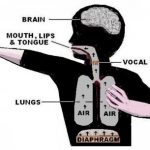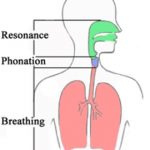Blog
All About Fluency!
What goes into coordinating fluent speech?
- Respiration- the process of using breath to create speech sounds.
- Phonation- the process by which the vocal folds produce certain sounds
- Articulation- the adjustments and movements of speech organs involved in pronouncing particular sound, taken as a whole.
- Resonation– The buzz created by the vocal folds resonates (vibrates) the air column and this in turn causes the structures above and around the larynx to vibrate/resonate as well.
If only one is “off,” there will be a breakdown in fluency.
What is Disfluency?
- Various surface interruptions that occur in on-going speech, whole word/part word repetitions, irregular rhythm, sound prolongation, cessation of speech
- “Normal nonfluencies,” occur is everyone’s speech- word finding, sentence formulation, distractions, interjections (like, um, you know)
Dimensions of normal speech fluency
- rate (appropriate timing)
- continuity (smooth connections)
- tension effort (appropriate force)
The Major Components of Stuttering:
Core Behavior-what a Person Who Stutters does WHEN they stutter
- Repetition- When a sound, syllable, or word is repeated several times: b b b-aby or ba ba ba baby
- Prolongation- when a sound is held for a long time or just keeps coming: baaaaaaby
- Complete block- when the sound and airflow are completely stopped: b—–aby
Secondary Behavior– what a Person Who Stutters does BECAUSE they stutter
- eye blinking
- foot stomping
- head nodding
- face movements
- avoid talking
- add words
- change what was going to be said
Feelings and attitudes about stuttering: (anxiety, nervousness, fear)
Two Approaches For Treatment
Fluency Shaping: speak more fluently, which includes factors such as: speak with a slower rate, easy onsets, airflow management, intonation and phrasing management, continuous forward moving speech
Stuttering Modification: helps the person monitor the stuttered speech more fluently (stutter more fluently)- the Moment of stuttering is changed. Some techniques include:
- Identification: understand core/avoidance behaviors understands feelings associated with stuttering learn about stuttering
- Desensitization: address emotions toward stuttering, relax, teach person who stutters to tolerate moment of stuttering and reduce anxiety
- Modification: Cancellation-finish stutter, make adjustments, and re-utter word
- Pull-outs: examine, plan, change, finish word in an easier way
- Preparatory set: before saying the word plan change, and produce the word more easily
Treatment Goals
Acceptable Fluency
- Noticeable stuttering of less severity.
- Comfort in role of communicator, despite stuttering.
- Speaker makes adjustments to maintain an acceptable level of stuttering.
Controlled Fluency
- Must monitor and adjust speech to maintain natural or normal sounding speech.
- Speaker must pay attention to how he is speaking.
Spontaneous Fluency
- Characteristic of the normal speaker.
- Effortless.
- Speaker more concerned with what is said than how it is said.
Thanks for reading! Contact one of our seven facilities if you suspect that you or a loved one may have a fluency concern. Happy Fall!
Amanda Weiner, MS CF-SLP TSSLD






